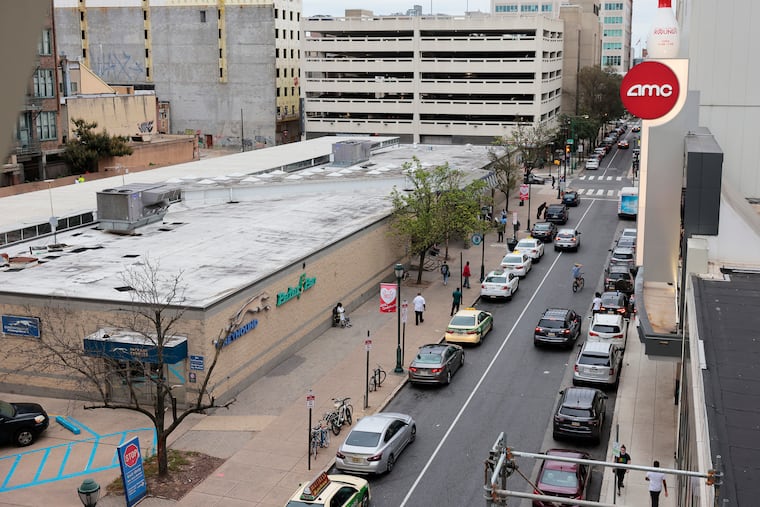After more than two years of drama, Greyhound buses may be going home.
The Philadelphia Parking Authority would renovate the former intercity bus terminal on Filbert Street and run it on behalf of the city government, according to an agreement officials have reached.
“When you come to Philadelphia we want you to be able to arrive at a place that is aesthetically nice and safe and a real terminal — not just be dropped off on the street in a neighborhood,“ Rich Lazer, executive director of the parking authority, said in an interview.
PPA’s board must approve a lease with the property owner. Legislation to assess fees on buses for using the loading bays at the station to finance renovations and operating costs was introduced Thursday in City Council.
“We’re grateful that work is going on to pass an ordinance to fund through carrier contributions … to have a safe and comfortable experience coming to Philadelphia,” said Deputy Managing Director Michael Carroll. He said the fees will cover costs that “the city would otherwise incur.”
PPA, a state entity, has a tentative agreement for a 10-year renewable lease with the owner of the property, 1001-1025 West Filbert Street LLC, the authority said. Bus usage fees would pay the $13 million cost of the lease as well as renovation and operating costs, Lazer said.
PPA would operate the station it in partnership with the city. Some parts of the arrangement are still being discussed and finalized. “We hope we will be able to serve buses in a convenient location with minimal impact on neighboring communities,” Carroll said.
For instance, the Streets Department would change traffic patterns so buses are routed to the station via Market Street instead of going through Chinatown, he said.
Greyhound ran the terminal at 10th and Filbert for more than three decades but ended its lease in June 2023, amid a wave of national wave of cost-cutting after the bus company’s real estate arm was sold to a hedge fund.
Many have described Philadelphia’s inability since then to find a stable new home for intercity buses with proper shelter and amenities a civic embarrassment and even, to some, a humanitarian disaster.
Officials hope to have the closed station up and running in May 2026, just as thousands of visitors are expected for a summer of World Cup matches and events surrounding the 250th anniversary of the Declaration of Independence.
PPA plans to renovate restrooms and waiting areas and add lighting and new landscaping to the building. It also will route buses to the station to avoid extra traffic in the heart of nearby Chinatown, Lazer said.
The Filbert Street building is accessible to local transit options and close to Chinatown businesses, the Fashion District, the convention center and hotels.
“We’re a world-class city and we need to have a bus terminal that is representative of that,” he said.
Greyhound’s roving bus stop
The terminal on Filbert Street, home to Greyhound, its parent company FlixBus and Peter Pan Bus Lines, closed in June 2023 and moved to curbside operations on the 600 block of Market Street. The new site, chosen by city officials, lacked benches, bathrooms, and other amenities.
» READ MORE: Timeline: The Greyhound station’s many moves
“Rarely has a single government decision unleashed such chaos,” wrote Inquirer architecture critic Inga Saffron.
Intercity buses gobbled up the Market Street bus lane set aside for SEPTA buses. Drivers dropping off and picking up passengers clogged traffic.
Five months later, Greyhound and the other carriers moved operations to a corner in Northern Liberties along Spring Garden Street. City officials promised it was temporary but the “station” is still there, with attendant trash and disruptions to local business.
“Spring Garden is awful, and it’s not anybody’s fault. It’s just what happened,” Lazer said, adding it seemed the best temporary bus option at the time.
Proposals to move the stop to other locations met fierce pushback from residents, business owners, and community groups.
This May, City Council held a meeting to press administration officials about lack of progress on finding a permanent location. John Mondlak, the first deputy chief of staff of the city planning department, said then that it was difficult to estimate how long it might take to establish a permanent intercity bus station: “It’s going to be years.”
This is a developing story and will be updated.
Anna Orso contributed to this article.

